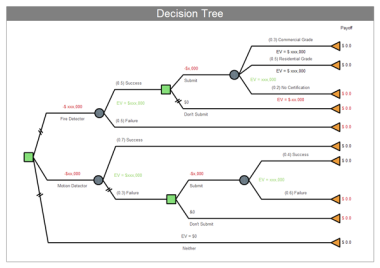(Well, we solved the Problem of Human Freedom in the previous post! All in a days work here at naturereligionconnection.org. —- actually, all in more like a years work! It is a rather peculiar solution, I will admit, and this post — number twelve in the series on Freedom — will review the solution and discuss some of its further implications in Light of the Modern Precedent of “I Could Have Done Otherwise!” First published 5/10/2019)

“Could I have done otherwise?”
There is a famous precedent in the modern debate on Human Freedom. You ask, “In a precise setting of circumstances in the past, could I have done otherwise than I did?” “Hard Determinists” are zealous defenders of the “scientific image of the world”.* They contend, “No, you could not have done otherwise. Your behavior was determined by causes to be what it was, no options were available.” They, then, project this post factum reality into the future and contend we have no Freedom. In effect, you are ‘only’ a billiard ball in a succession of billiard balls reacting, or you are a ‘trillion’ little billiard balls and still in a necessary succession but now only protracted; these are analogies we have used often in this blog series. That little word “only” will turn out to be the pivotal point: What-goes-in is only What-comes-out?

Believers in Human Freedom and Responsibility have generally contended that this position must be denied, that under those exact circumstances, somehow, you had options, possibilities: “‘I could have done otherwise!’ How else could I be responsible for my action unless I originated it, at least in some significant sense?” In some ways, maybe the point of this contention is that New Things are possible: What-comes-out is different from What-went-in.
Many of these believers in freedom have asserted “gods” and “souls” or some other counter-causal basis for freedom.** A 20th century French philosopher posited an “elan vital”, a “vital force” that inhabits only living things distinguishing them from the strictly caused world of the inanimate. Other believers have banked on the character of Consciousness as not explainable in scientific terms; it is an inherently different kind of “thing” than objects in, or explained by, science. A major school of philosophy, today, holds this position: Consciousness is not a scientific property, yet it is undeniably real.
A famous modern British philosopher, John Austin, set the stage for this Free Will

debate in this way (paraphrased): He was golfing. He had this putt. He missed it, but he could not help himself from thinking, “I should have holed it; I could have holed it, under the exact same conditions; I could have made that very putt.” He went on to clarify that it was not that he wasn’t trying hard enough, he was. And that if you lined up ten putts just like it, he would make them, or nine of them. “I could have made it, under those very conditions,” he concluded.
Was he right to think that he could have made that putt under the exact same conditions in which he missed it? All Determinists say, “Absolutely not: The exact same conditions, the exact same outcome. “ Now determinists will also clarify that “exact same conditions” means physical conditions, for what else is there? Austin’s position leaves the impression that there is something more than just the physical conditions of wind, grass, speed, muscle movement, balance, impact, brain waves, neural signals….
Philosopher Dan Dennett has broken new ground in this debate. Though most of us, including philosophers and scientists, do accept the Compatibility of a caused universe and human freedom, Dennett has worked out a detailed and innovative defense of the position that you are caused to do what you have done, but were also free when you did it and free when you act in similar situations in the future.
*Famous “hard determinists” are Sam Harris, atheist and neuroscientist, also biologist J. Coyne —blog: Why Evolution is True. They believe persons have No Free Will.
**”counter-causal basis for freedom”:Some have tried randomness, and the uncertainty now embraced at the atomic level. Dennett argues against these attempts at Free Will by these routes. In general, I take it that this new physics allows more predictability at the macro level, not less.
Humans “Can” be Free and Caused at the Same Time
Dennett agrees with the Hard Determinists; “In those exact circumstances in the past, you could not have done otherwise”, but he also believes there is solid ground to believe we are a free and responsible person in our actions, that is, for most of us and in most of our situations. When the chain of causation passes through and includes our unique structural properties such as our deliberative processes and their chosen actions, we are both free and caused. This position is called Soft Determinism or Compatiblism, and it is based in a belief in the ontological significance of Structure. Dennett is claiming that we can think of “deliberation”, “choice”, “thought” and our resulting “actions” as freely done, and as relying upon logic, evidence, investigation, concentration, decision, and in general all our unique structural and design features, yet also be caused and determined! This is “determined deliberation” and it is a process similar to the hand calculator pictured earlier. Structure and this “determined deliberaton” will need to be clarified because it is not our normal concept of “thinking”.

“In those exact circumstances of the past”, indeed you had to do what you did, miss the putt. “Under determinism nothing can do anything other than what it in fact does”, says Dennett. But, he quickly adds that you will never face those circumstances again, not exactly. “People … are not only more complicated than anything else we know in the universe, they are also designed to be so sensitive to the passing show that they can never be in the same micro state twice”, says Dennett. And further, what we, persons, are interested in — as structures with significant autonomy — is not the exact, precise, situations, but a kind of situation In General. That is why Austin spoke about ‘lining up similar putts’ and when he sank them, they offered ‘proof’ that more than just the actual — missing the putt — is possible.
My deliberations and their chosen actions ‘can’ be free because Structures ‘can’ Function. Dennett explains that we

need some kind of “looseness” to exist in the world. Following David Hume, the famous 18th century British thinker, this “looseness” prevents ‘the possible from shrinking too tightly around the actual‘. After all, basic to the way we live is the idea that, for example, “a dog ‘can‘ bark” or “a coin toss ‘can‘ come up heads or tails”. An “openness” exists and is expressed in the little word “can”, even though only one of the options will be the outcome: barking or not barking, head or tail. That is the “looseness”, we do not know which!
It is our limitation that necessitates that we live in a world that has “options” and “accidents”, where we “make choices”, where some things are “avoided”, where some things are “probable”, where we “do things” and “make a difference”! In fact, it is our limitations as a finite structure within the universe (the physical system that

we are a part) with our limited ability to know things, that necessitates that any one creature or object, really, every creature and object, stand out as distinct from its ultimate background, The Universe as an Uninterrupted Fabric of Causal Necessity. Without our limited perspective, all would simply be as a domino among dominoes, falling! It would be a rather bland place, indeed.
Wow, I do love it when I write like that last paragraph! I hope its not too ‘purple’, and What a bombshell! From the point of view of a Super Scientist outside the universe and ‘looking’ back at it with knowledge of all its forces and objects and their lawful interaction, no future event would be unknown to them. There would be no ‘accidents’, no thing that was ever ‘avoided’, no ‘probability’ in any coin toss, no ‘freedom’ to ‘choose’ one ‘option’ or another! This Super Scientist knows the universe as one giant and highly abstract structure, within which all lesser structures have lost their integrity and have been ‘dissolved’.
(In the next post, Structures 2, the crucial characteristics of structures will be discussed along with their implications for the “Could not have done otherwise precedent”. Also, the limitations of the Scientific World View will be approached once again. This will help clarify the point of post 11, that “Science Lags Behind” and that Structure clarifies the difference between the strictly causal approach to the world of Hard Determinism and the Soft Determinists who argue that structures mediate causal forces and yet, themselves, are strictly organizational, physical designs!)

- THE ULTIMATE STRUCTURE OF THE UNIVERSE? There are 10 dimensions in our universe, claims Surperstring Theory. “Oh, there I am, next to that ‘D’ shaped blue congregation to the right; I’m waving. Can’t you see me?” (Image from Wikipedia Commons)


Always like superstring arguments! Keep thinking. Mark
LikeLike
Right!
LikeLike